|
 Physarum leucophaeum Physarum leucophaeum
SynonymsPhysarum nutans var. leucophaeum
BiostatusPresent in region - Indigenous. Non endemic
Images (click to enlarge)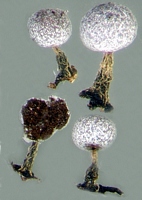
Owner: J.A. Cooper | 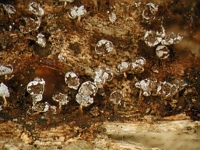
Caption: sporangia
Owner: J.A. Cooper | 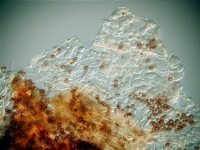
Caption: spores and capilitium
Owner: J.A. Cooper | 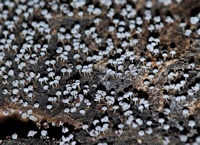
Owner: J.A. Cooper | 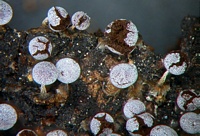
Owner: J.A. Cooper | 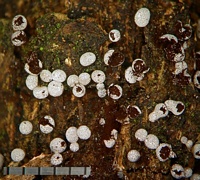
Owner: J.A. Cooper |
Article: Stephenson, S.L. (2003). Myxomycetes of New Zealand. Fungi of New Zealand. Ngā Harore o Aotearoa 3: xiv + 238 p. Hong Kong: Fungal Diversity Press.
Description: Fruiting body a stalked sporangium (rarely sessile and then somewhat plasmodiocarpous), gregarious or scattered, 0.8–1.5 mm tall. Sporotheca subglobose to depressed, 0.4–0.8 mm in diameter. Stalk usually short, fuscous to reddish brown, often powdered with white, often spirally twisted, arising from a dark, more or less netted hypothallus. Peridium consisting of a single layer, thin, membranous, iridescent, bluish ashen to white, darker below, flicked with lime or sometimes rather strongly calcareous, convex or plane below, rarely umbilicate, usually with a dark basal disk or shallow cup, dehiscence irregular. Capillitium delicate, dense, consisting of numerous, white lime nodes connected by hyaline threads, the nodes mostly rounded but varying to large, angular or branching and then fewer. Spores black in mass, yellow brown by transmitted light, minutely roughened, 9–11 µm in diameter. Plasmodium white.
Habitat: Decaying wood and leaf litter.
Distribution: Widely distributed in North America and Europe and also known from Africa, Asia, and South America (Martin & Alexopoulos 1969). First reported from New Zealand by Cooke (1892), but without giving a specific locality. Known from Auckland, Bay of Plenty, Wellington, Buller, Fiordland, North Canterbury, Mid Canterbury, South Canterbury (Rawson 1937), Dunedin (Rawson 1937), and Southland.
Notes: This species is rather similar in appearance to Physarum nutans but is less common. Moreover, the latter has a longer, more slender stalk, the sporotheca is usually nodding, and the capillitium radiates largely from the base of the sporotheca.
|